Western trout anglers hoping for a little relief from a drought that’s well into its third decade can take heart in the fact that snow data collected by the Natural Resources Conservation Service looks good for the first time in a long time.
And that’s especially true for the southern reaches of the Rockies, where the drought has drained reservoirs, raised water temperatures and left some stretches of the most iconic trout streams in the country utterly unfishable.
From New Mexico north into Colorado and Utah, this winter has been a welcome one. Farther north, in Wyoming, Idaho and Montana, the data is less impressive, but snow-to-water equivalent is generally at or above normal in the most important drainages.
But, even this welcome winter, where snowpack ranges from 150 percent of normal in southern New Mexico’s Gila River basin to 117 percent of normal in Montana’s Madison River drainage, won’t put a noticeable dent in the ongoing western megadrought that started in 2000 and has persisted largely unabated since.
"Everybody is so eager to make an early call on this," Brad Udall, a water and climate researcher at Colorado State University told NPR recently. "Invariably, you'll get caught with your pants down if you think you know what's going to happen."
In essence, it would take a significant climatic shift, the opposite of the shift that threw the West into this drought in 2000, to relieve the region of drought-like conditions. The West hasn’t been this dry in 1,200 years, and rarely do serious droughts or gluttonous periods of plenty last a measly 23 years.
Drought has shaped the West. It has literally helped create and dismantle civilizations – the Anaszi people of the American Southwest thrived for 1,000 years before disappearing between 1275 and 1300 A.D., thanks to a drought that made life in the desert impossible.
But up high, where snow falls and then, under ideal circumstances, remains in cold storage for months before slowly trickling into the rivers and streams of the West, this year has been one many have waited for. No, it won’t run off the mountains and magically refill Lake Mead and Lake Powell, but it might keep the upper Colorado fishable into summer, or prevent “hoot owl” closures on Silver Creek, the Madison and the Yellowstone.
And, in times like these, when trout face an uncertain future, a season of water certainty never hurts.
In some drainages in Colorado, the snowpack to date is 150-percent of normal. In the Gunnison basin, the NRCS Snotel measurement gauge at Columbine Pass has recorded 250 percent of the median peak as of Feb. 11. The upper Colorado’s cumulative snowpack sits at 125 percent of normal for the same date.
Utah, home of the rapidly disappearing Great Salt Lake, is having a banner water year from south to north. The Bear River drainage that feeds the big inland sea sits at 137 percent of normal as of Feb. 11, and other river basins across the state are flush with high-country snow. The Weber-Ogden rivers (Wasatch Front) Snotel report reads 153 percent of normal, and the Provo River basin clocked in at 167 percent of normal on Feb. 11.
For us trout-minded anglers, the West’s snowy winter is encouraging. But before everyone starts making travel plans for the summer angling season, consider first some sobering facts. More than two decades of drought have wrung just about every possible drop of water out of the Rocky Mountain soil. As Udall explained to NPR, even winters that have provided a solid 90 percent of their average snowfall in recent years have resulted in only about 50 percent of the average water runoff. Thirsty soil is soaking up snowmelt before it can reach our rivers.
It’s totally fine to kind of cheerlead as Mother Nature continues its winter assault on the Rockies – we need every snowflake she can send our way. But it’s also wise to hold back a bit of realism. It took just two decades to all but empty Powell and Mead. Prevailing wisdom says it will take just as long, or longer, for the lakes to refill. In fact, scientists are skeptical that the largest man-made reservoirs in the West will refill in our lifetimes.
We may very well enjoy a great season of trout fishing thanks to a bountiful winter, but, on the whole, it’s safe to say that future generations of American fly fishers will be hard-pressed to find dependable trout fishing. There won’t be enough water in the West, and if there is, it’ll be too damned warm. Of all native trout in the United States, 92 percent face climate-related threats.
Reality bites. Hard. Even longtime trout anglers are coming to grips with what the future may hold. At last School of Trout, an annual gathering of fly fishing teachers and students in Island Park, Idaho, longtime angler and Orvis icon Tom Rosenbauer had a brutally honest prediction for those hoping to learn at his hip.
“We’re going to lose some trout streams. If things keep up, we’re going to be limited to fishing below tailwaters where water comes out of a dam, and we’re going to be limited to high-mountain streams,” he said. “The freestone, non-tailwater streams that go through the valleys? We’re going to lose some of those.”
In fact, the last generation of Western trout anglers may, indeed, be plying the waters of the Rockies right now. In less than 60 years, scientists predict the loss of half of the coldwater habitats that support trout.
So enjoy the coming fishing season and keep cheering from the sidelines as this winter shapes up to be the best in years. Who knows? Perhaps it’s an unexpected harbinger of good things to come – we can only hope. But realism matters, and data doesn’t lie. We may be watching the sunset of Western trout fishing as we know it.




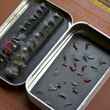



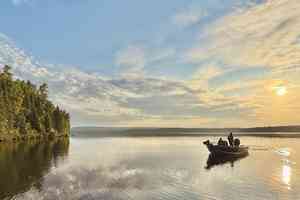


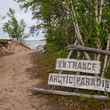

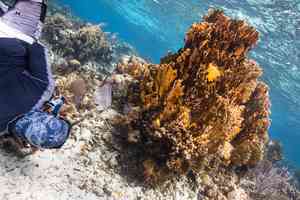

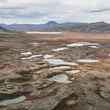
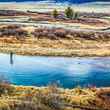



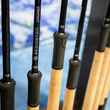
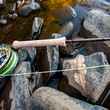



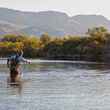
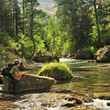
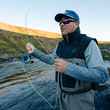
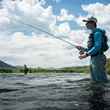

Comments
t-mac replied on Permalink
It's hard not to be hopeful, and I kinda need some hope right now! Seeing the rockies with actual, heavy snow on their peaks for the first time in years has been such an amazing thing to witness again.
Mark van Roojen replied on Permalink
February through April are the snowiest season in the Sierra Madre Mountains of Wyoming. So it is a bit hard to predict where the total snowfall will wind up as a percentage of normal, but we are seeing a good start. It will also matter how quickly things warm up once spring hits. If it runs off slowly that will be the best scenario.
Kerry replied on Permalink
It hasn’t hit home yet, but it will soon enough. We will be losing trout streams, which will turn into bass streams. The good old days of trout fishing in America are ending, and this is without reference to other issues like accessibility or crowding. Climate change is real, despite the denialism voiced by mostly Republican stooges and fossil fuel corporatists. Politics matters, and Dick Cheney loves his money more than he loves his trout fishing.
Brall replied on Permalink
This article tips its hand that it has a point of view on climate change that goes something like this: No matter how good things seem at the moment, don't kid yourself - the planet is doomed. For those who read critically, climate predictions of any sort are only as good as the models upon which they are based. The author does not document either the source of his models or their assumptions. Instead, he cites the opinion of the Director of Fishing at Orvis. Lazy journalism like much that you read on the climate debate.
t-mac replied on Permalink
Did you miss all the links and cited sources throughout the whole article? Studies from Colorado State University, USDA documentation, NPR with more cited sources. Nothing about this is lazy and climate change denial is only hurting the situation. Grow up
James Andrews replied on Permalink
I have to agree with you. Also, I'm not sure where they are getting their data for Wyoming? We are well above 150% and it doesn't really start snowing here for another month. If Lake Meade and Lake Powell were full, they would blame that on climate change as well.
Our weather in the west is cyclical. The drought is over. It ended in at the end of summer when the monsoons made it to Wyoming. Hang on to your hats and buy a boat because the next 18 years are going to be wet.
Kerry replied on Permalink
https://news.harvard.edu/gazette/story/2023/01/harvard-led-analysis-find...
Steve Bowens replied on Permalink
It's just not possible... the climate alarmists have told us the lack of rain is due to CO2 emissions from the last hundred years... also, the emissions are worse than ever; hence, no 1200 year drought and no refilled rivers/lakes.
Pages